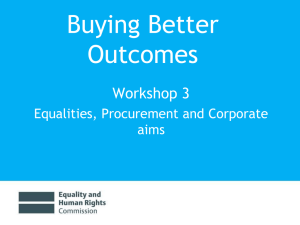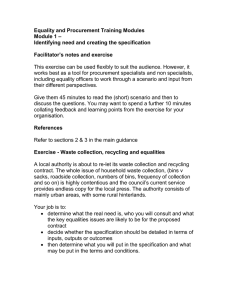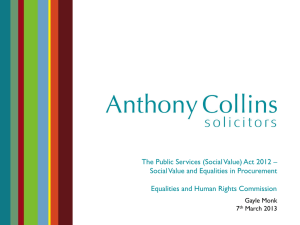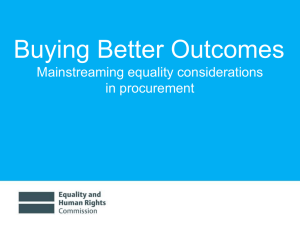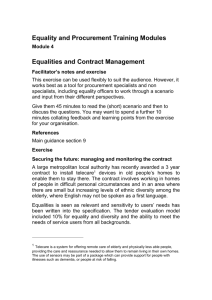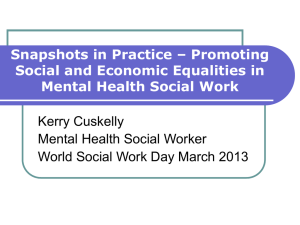powerpoint - Equality and Human Rights Commission
advertisement
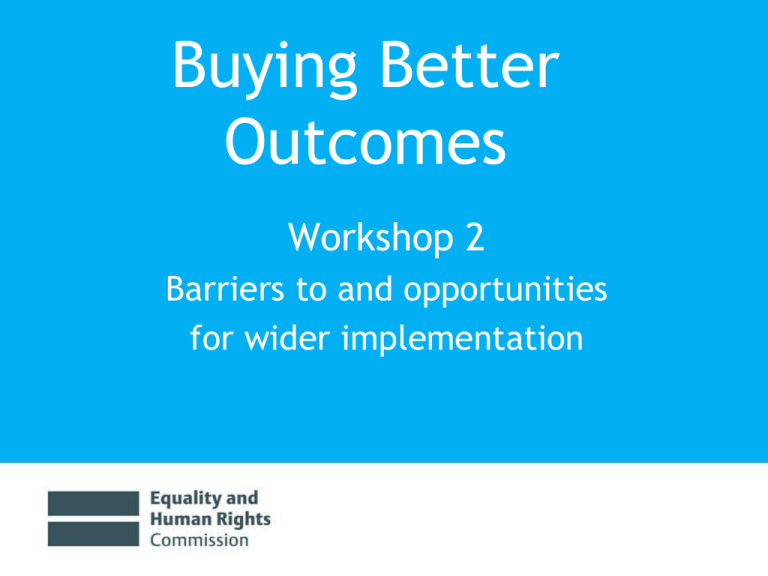
Buying Better Outcomes Workshop 2 Barriers to and opportunities for wider implementation Barriers to effective implementation Myths: • EU regulations do not allow it • equalities often not relevant • building equalities into procurement is not compatible with VFM • doing so places burdens on suppliers and public bodies Barriers to effective implementation Organisational/cultural factors: • who is responsible for compliance? need for clear corporate approach and consistent processes • silos – between departments and partners - differing views Barriers to effective implementation Wider contextual factors: • drive for increased efficiency and real savings • move to more shared services • greater use of frameworks and category management etc. Barriers to effective implementation Wider contextual factors: • Public Services (Social Value) Act • increased focus on getting a better return on procurement – Social Return on Investment/’sweating the pound’ • For local councils, impact of the Localism Act What to do first? - start corporately and think laterally • need corporate approach and strategy • which spells out how procurement will be used to drive delivery of equalities priorities • but crucially how addressing equalities can contribute to your wider corporate aims – and help deliver community/social/economic benefits • and which sets framework for supplier diversity policy What to do first? - start corporately and think laterally • • then build relevant equality considerations into each stage of the procurement process. The equality duty could ensure equalities implications and priorities are taken into account This is more easily achieved with positive leadership from key stakeholders A clear understanding of equalities’ ‘relevance’ to the procurement project is essential Work with others • inside and outside your authority • work across departments and with other organisations in your area • bring equality and procurement staff together to foster mutual understanding and share skills • within your authority work with the client side Work smarter • where resources are tight, consider joint work with other public bodies and neighbouring authorities • many public authorities are developing forms of shared services, and some procurement functions already shared • develop or use common standards where relevant Discussion/Exercise What are the barriers in your public authority to building equality into commissioning and procurement? What steps could you take to remove these barriers? How could you organise within your public authority or with partners to overcome these barriers?
